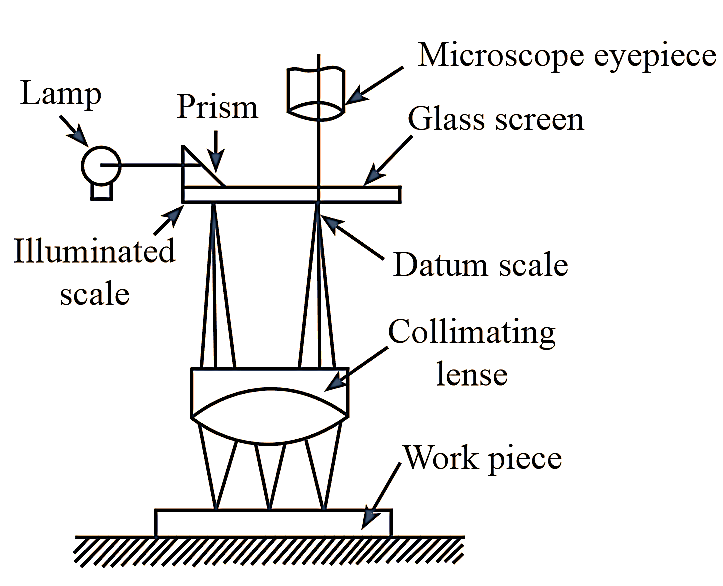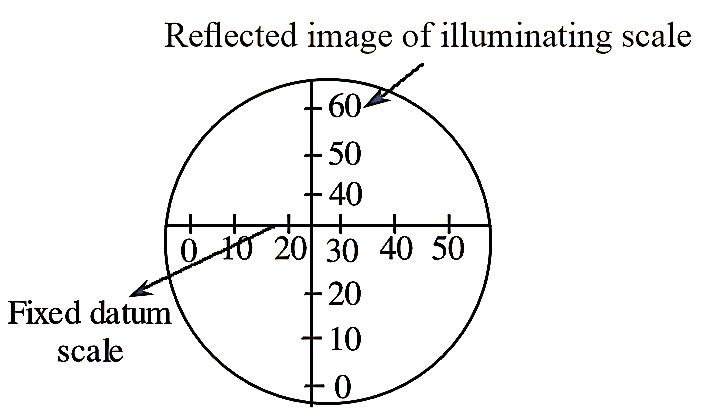Angle Dekkor is an angle comparator which measures angle and deviation with the help of another device, may be a sine bar or angle gauges. It is a type of autocollimator which calibrates vertical and horizontal angular measurements. It consists of microscope eyepiece, collimating lens, glass screen, illuminating scale, datum scale. lamp, prism and workpiece as shown in figure 1.


Figure 1: Angle Dekkor.
The illuminating (vertical) and datum (horizontal) scales, fixed on a glass screen and are mounted in the central plane of the collimating lens. A microscope eyepiece is arranged on a top of the glass screen to observe the measurements carried out on both the scales. The whole setup is arranged in a tube and is mounted on an adjustable table. The beam from the lamp is allowed to fall on the collilmating lens through prism and glass screen. The beam strikes the workpiece and then the reflected image is refocused by the collimating lens. The reflected image falls on the glass screen such that it comes in the view of microscope eyepiece. The reflected image of illuminating scale falls on right angle of the fixed (datum) scale; thus intersecting the position of two scales with each other. Therefore; the readings measured from the illuminating scale gives the angular deviation from one axis at right angle (90°) to the optical axis and the readings measured from datum scale gives the deviation from one axis mutually perpendicular to other two scales. The difference between the two readings on illuminating scale gives an error.
Advantages of Angle Dekkor
- It has the ability to measure small angular variations.
- The cost associated with instrument is comparatively less.
- It is capable of measuring angles at short distances.
- The measurement obtained is accurate.
- It is simple in construction.
- It can be used as comparator.